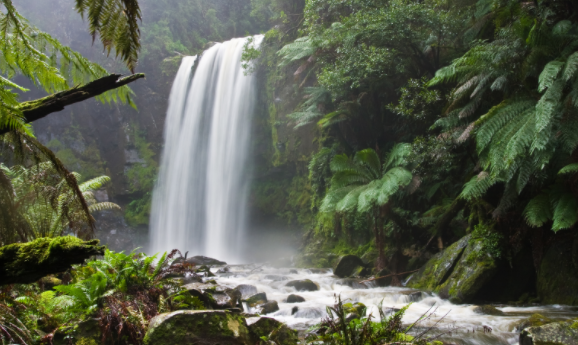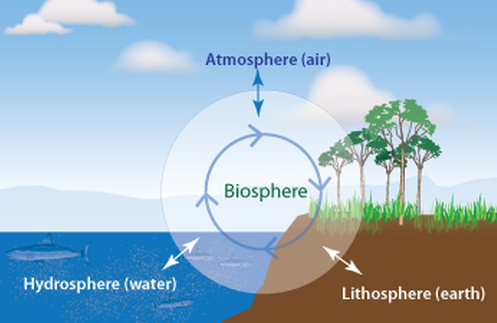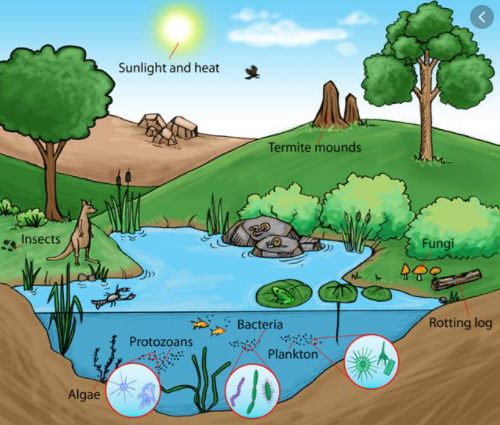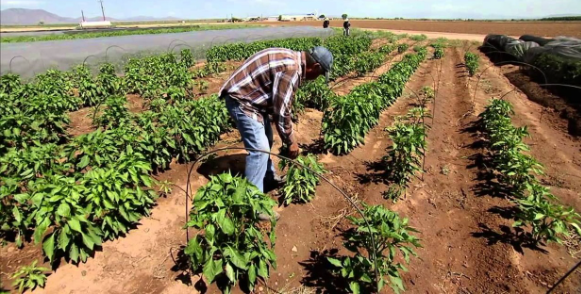
NCERT Solutions Class 7 Social Science Geography Chapter 1: Environment, here we are going to give you a summary of NCERT Solutions Class 7 Social Science Geography Chapter 1: Environment with questions and answers from the textbook. In this chapter we will study about the meaning of environment, different types of domains and ecosystem. Your all doubts from the chapter of NCERT Solutions Class 7 Social Science Geography Chapter 1: Environment of class 7 NCERT will be cleared from these explanations.
Read more: NCERT Solutions for Class 7 Social Science Geography Chapter 6: Natural Vegetation and Wildlife
NCERT Solutions Class 7 Social Science Geography Chapter 1: Environment : Introduction
Environment: The place, people, things and nature that surround any living organism is called environment. In other words, it is a combination of natural and human made phenomena.
Environment: French word Environer/ Environner meaning “neighbourhood”.
World Environment Day is celebrated every year on June 5 by the people of all over the world. Above all this campaign has been started to bring awareness among the people regarding environmental issues and to take positive steps for the environment.
Different types of environments
Natural environment refers to both biotic and abiotic conditions existing on the earth.
The human environment reveals the activities such as creations and interactions among human beings.
Biotic: The world of living organisms, such as producers, consumers, or decomposers.
Abiotic: The world of non-living elements such as air, land and water.
NATURAL ENVIRONMENT
Land, water, air, plants and animals comprise the natural environment.
Let us learn some facts about the domains.
Lithosphere: Firstly, lithosphere is the solid crust or the hard top layer of the earth.
Secondly, it is made up of rocks and minerals and covered by a thin layer of soil.
Further it is an irregular surface with various landforms such as mountains, plateaus, plains, valleys, etc.
Landforms are found over the continents and also on the ocean floors.
Therefore, lithosphere is the domain that provides us forests, grasslands for grazing, land for agriculture and human settlements.
It is also a source of mineral wealth.
Hydrosphere: It comprises various sources of water and different types of water bodies such as rivers, lakes, seas, oceans, etc.
It is essential for all living organisms.
Atmosphere: Thin layer of air that surrounds the earth. The gravitational force of the earth holds the atmosphere around it.
Subsequently, atmosphere protects us from the harmful rays and scorching heat of the sun.
It consists of a number of gases such as oxygen, nitrogen and carbon dioxide. It also contains dust and water vapour.
The changes in the atmosphere produce changes in the weather and climate.

Biosphere
Plant and animal kingdom together make a biosphere or the living world is called biosphere.
It is a narrow zone of the earth where land, water and air interact with each other to support life.

Ecosystem
All plants, animals and human beings thus depend on their immediate surroundings. They are also interdependent on each other. This relation between the living organisms, as well as the relation between the organisms and their surroundings form an ecosystem.
In other words, ecosystem is a system formed by the interaction of all living organisms with each other and with the physical and chemical factors of the environment in which they live. However all are linked by transfer of energy and material.
Example of ecosystem: There are numerous examples of ecosystems such as large rain forest, grassland, desert, mountains, lake, river, ocean and small pond.

HUMAN ENVIRONMENT
We, human beings interact with the environment and modify it according to their need.
For instance early humans adapted themselves to the natural surroundings. Thus with time needs grew and we became more varied. Humans learn new ways to use and change the environment always. We learnt to grow crops, domesticate animals and lead a settled life.
The wheel was invented, surplus food was produced, barter systems emerged, thus trade started and commerce developed.
Industrial Revolution enabled large-scale production. Transportation became faster. Therefore, Industrial revolution made communication easier and speedy across the world.
However, a perfect balance is necessary between the natural and human environment. Most importantly, humans must learn to live and use their environment in a harmonious way or else we will face many difficulties in the future and therefore we might even become extinct.

NCERT Solutions Class 7 Social Science Geography Chapter 1: Environment : EXERCISES
1. Answer the following questions.
(i) What is an ecosystem?
Ans. This relation between the living organisms, as well as the relation between the organisms and their surroundings form an ecosystem.
(ii) What do you mean by natural environment?
Ans. Natural environment refers to both biotic and abiotic conditions existing on the earth.
(iii) Which are the major components of the environment?
Ans. Major components of the environment are:
- Lithosphere
- Hydrosphere
- Amosphere
(iv) Give four examples of human made environments.
Ans. Bridges, roads, parks and buildings are four such examples of human made environments.
(v) What is lithosphere?
Ans. Lithosphere is the solid crust or the hard top layer of the earth. It is made up of rocks and minerals and covered by a thin layer of soil.
(vi) Which are the two major components of biotic environment?
Ans. Two major components of biotic environment are:
- Plants
- Animals
(vii) What is biosphere?
Ans. Plant and animal kingdom together make biosphere or the living world.
2. Tick the correct answer.
(i) Which is not a natural ecosystem?
(a) Desert (b) Aquarium (c) Forest
Ans. (b) Aquarium
(ii) Which is not a component of the human environment?
(a) Land (b) Religion (c) Community
Ans. (a) Land
(iii) Which is a human made environment?
(a) Mountain (b) Sea (c) Road
Ans. (c) Road
(iv) Which is a threat to the environment?
(a) Growing plant (b) Growing population (c) Growing crops
Ans. (b) Growing population
3. Match the following.
| Column I | Column II |
| (i) Biosphere | (a) blanket of air which surrounds the earth |
| (ii) Atmosphere | (b) domain of water |
| (iii) Hydrosphere | (c) gravitational force of the earth |
| (iv) Environment | (d) our surroundings |
| (e) narrow zone where land water and air interact | |
| (f) relation between the organisms and their surroundings |
| Column I | Column II |
| (i) Biosphere | (e) narrow zone where land water and air interact |
| (ii) Atmosphere | (a) blanket of air which surrounds the earth |
| (iii) Hydrosphere | (b) domain of water |
| (iv) Environment | (d) our surroundings |
4. Give reasons.
(i) Man modifies his environment
Ans. Man modifies his environment to meet his needs. With time needs grow and man become more varied. Man learns new ways to use and change the environment always.
(ii) Plants and animals depend on each other
Ans. Plants and animals are dependent on each other. One can not survive without the other. Plants provide food and oxygen to animals. While animals help plants grow by dispersing their seeds in different places.
NCERT Solutions Class 7 Social Science Geography Chapter 1: Environment : Conclusion
In conclusion to NCERT Solutions Class 7 Social Science Geography Chapter 1: Environment we have learnt a lot about environment and its components. Environment naturally is beautiful but we humans have modified and destroyed some part of it according to our needs. However we need to protect our environment and use it to our needs in a harmonic way. To sum up, after studying NCERT Solutions Class 7 Social Science Geography Chapter 1: Environment we have learnt about ecosystem, different types of domains and components of human and natural environment which is going to help us in the future.